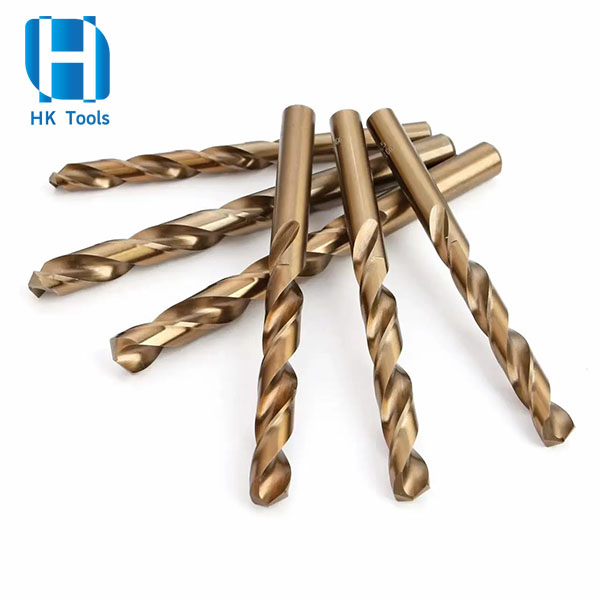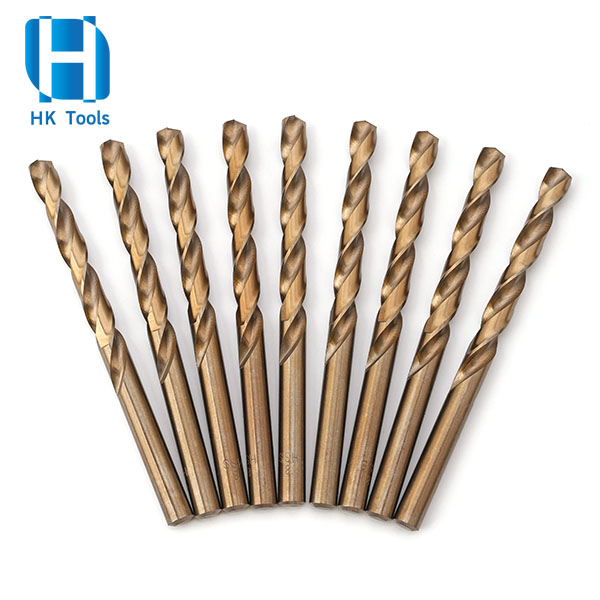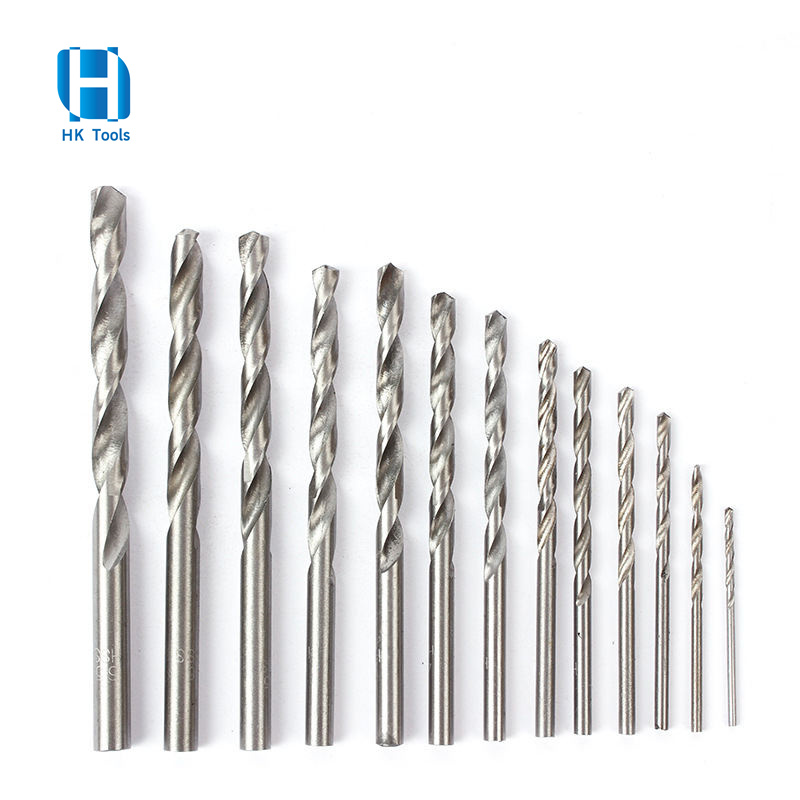Process Flow of Full Ground Twist Drill Bit
| Process Flow of Full Ground Process | |||
| No. | Process | Content | Remark |
| 1 | Materials preparing | HSSM42, HSSM35, HSSM2(6542), HSS4341, HSS4241 | |
| 2 | Cutting the materials | Before cutting the bar, it needs to be straightened first | |
| 3 | Pointing/Sharpening | Drill head handle for easy opening. After the drill bit is quenched, the hardness of the head and tail is different, so sharpening makes the head and tail distinguishable. | |
| 4 | Heat treatment | Also known as heat treatment, it improves the hardness and toughness of the drill bit. | The temperature is about 1000 degrees, and the hardness of the drill bit is increased. On the 3/4 length of the edge groove from the drill tip, the hardness is 63-66HRC, and the hardness of the shank is not less than 22.5HRC. |
| 5 | Rough grinding | Some are barren grinding, which removes the iron oxide scale on the surface of the raw material, commonly known as black skin removal. The margin is 2-8 wires. The large material is ground three times, and the small material is ground twice. | (Roll-forged drills and tapered shank drills first grind grooves and then rough grind) |
| 6 | Chamfering | 45º angle to the plane, height 1.5mm. | |
| 7 | Grinding flute | The equipment is KF188 full-automatic drill bit groove grinder, and the grinding edge of the drill bit is sharper than that of the rolled drill bit, which is one of the basis for judging the rolling and grinding of the drill bit | |
| 8 | Fine grinding | Also called light grinding. Measure the diameter of the drill bit: two opposite corners of the ligament are clamped with a screw micrometer, and the tightness is determined by the drill bit not falling off after the hand is released. The tolerance can only be negative, not positive. | Diameter D, drill bit diameter ø within 6mm, the error is accurate within 0.02mm; ø within 10mm, the error is accurate within 0.025mm; ø within 13mm, the error is accurate within 0.03mm. After fine grinding, the drill bit has an inverted taper from the head end to the tail end, with a gap of 0.02-0.08mm. |
| 9 | Cutting the point angle | 118º, 135º, 130º or according to customer requirements. | The larger the angle, the harder it is to locate, and the easier it is for the drill axis to deviate from the working surface |
| 10 | Edge ground | This is the difference between roll forged drill bit and edge ground drill bit | |
| 11 | Split point | The two sides of the top corner are re-opened by 1/2 respectively. The drill bit with 118º opening is finished after cleaning the edge, and the drill bit with 135º opening needs to be double-backed. | |
| 12 | Check the finished products | Check the appearance, size, etc., are there any cracks, and whether the ligament of the front and rear corners of the drill bit has collapsed? Are the grooves well ground? Defective products have to be reworked. | |
| 13 | Stamping,Laser marking | Generally HSS + specification (fixed and non-fixed) | |
| 14 | Cleaning and applying anti-rust oil | Mainly decontamination and anti-rust oil. | Wet oil and dry oil; there are also knowledge points such as pickling. White diamonds will be smoother after pickling. Other colored drills, especially roasted yellow drills, cannot be exposed to acid oil, and will fade! |
| 15 | Surface treatmeat | According to customer requirements, the surface of the drill bit is treated with color: Bright finish,Black finish,Tin-coated,Amber(Coffee) finish etc. | Titanium plating principle: Titanium powder is adsorbed onto the surface of the product in a vacuum environment. The principle of roasting and nitriding is the same, but the temperature control in the tempering furnace is different, resulting in different colors. The appearance of brown and black after nitriding is also due to the difference in temperature control. |
| 16 | Package | Product packaging, inner packaging, outer packaging, transportation packaging | Stick labels according to customer requirements, brush the front and side marks, there are eight cartons with #1-#7, #9 specifications |
| Grinding drill technology and equipment advanced diameter ø can reach 20mm. Generally, milling and rolling are used for drills above ø 13mm. The diameter of rolling drills can reach up to 30mm. Smaller diameter drills are cleaned first and then opened, and larger diameters are drilled first and then cleaned. | |||
Post time: Aug-03-2023












